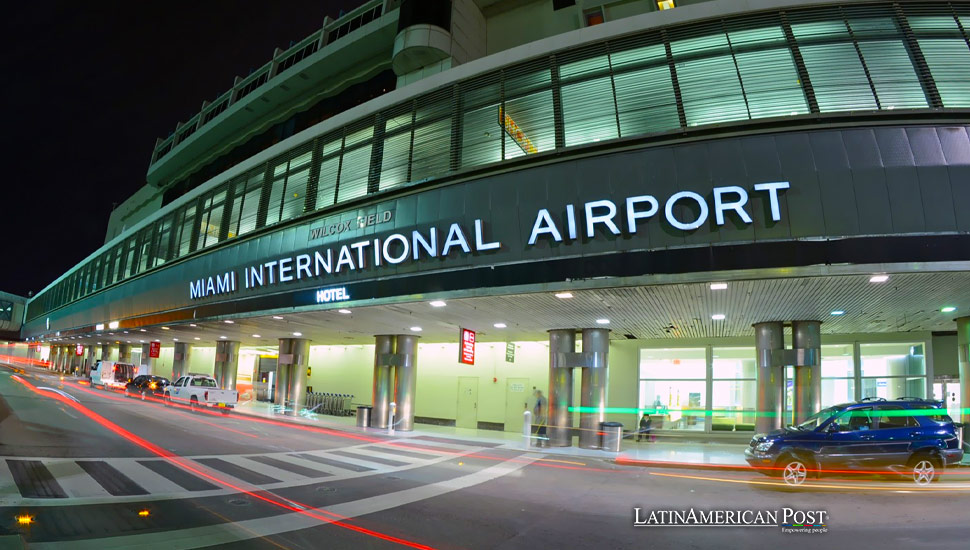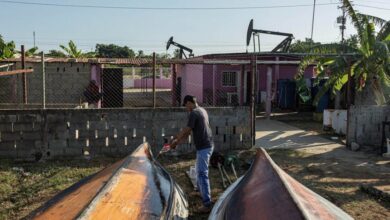Transforming Latin American and Caribbean Commerce Through Miami’s New Air Cargo Hub

Miami-Dade’s $400 million investment in a new air cargo center at Miami International Airport promises significant economic benefits, job creation, and enhanced connectivity for Latin America and the Caribbean.
Miami-Dade County’s bold decision to invest $400 million in a cutting-edge air cargo facility at Miami International Airport (MIA) is poised to revolutionize the logistics landscape of the Americas. This pioneering project, announced by Miami-Dade Mayor Daniella Levine Cava, is set to establish the first vertically integrated cargo community in the Western Hemisphere. With a scheduled completion in 2029, this four-story facility will catapult MIA’s cargo capacity by a staggering 50%, pushing its limits to a minimum of 4.5 million tons of cargo annually.
“The sky is the limit for MIA to lead the global air cargo industry with the construction of this unprecedented, cutting-edge facility,” Levine Cava stated in a video message, highlighting the consistent growth the airport has experienced since 2020.
The Vertical Integrated Cargo Community (VICC) will sprawl across nearly 800,000 square feet over 11 acres of airport land. This ambitious project is expected to significantly boost the local economy, generating a substantial 8,500 temporary jobs during its five-year design and construction phase. These positions are projected to yield a substantial $500 million in wages. Moreover, the facility will create 2,500 permanent jobs, contributing a significant $512 million in leases and commercial revenue to the Miami-Dade Aviation Department over the 40-year agreement.
By 2024, MIA is projected to handle approximately 2.9 million tons of cargo. The VICC’s sustainable design, which includes a LEED Silver Certification, underscores Miami’s commitment to environmental responsibility and positions the city as a forward-thinking leader in air cargo logistics.
Boosting Regional Trade and Connectivity
Miami International Airport plays a critical role in the economic ecosystem of Miami-Dade County and the state of Florida. It is the largest U.S. airport for international cargo and boasts the highest number of flights to Latin America and the Caribbean. MIA is also the second busiest airport for international passengers in the country.
The strategic importance of MIA extends beyond the United States’ borders. Latin America and the Caribbean heavily rely on Miami as a gateway for trade and commerce. The VICC will significantly enhance the region’s connectivity, facilitating more efficient and higher-volume trade routes between North and South America. This increased capacity is poised to streamline supply chains, reduce transit times, and lower shipping costs, benefiting businesses and consumers.
The implications of this development are particularly significant for Latin American and Caribbean nations. Many countries depend on air cargo to export perishable goods, electronics, and other high-value products. The enhanced infrastructure at MIA will provide these businesses with more reliable and faster access to global markets. This can lead to increased export volumes, greater market penetration, and a more decisive competitive edge internationally, fostering a sense of optimism for the potential growth in their regions.
Furthermore, the agreement mandates that at least 60% of the design and construction companies involved in the project be based in Miami-Dade County, with a focus on hiring registered small businesses. This supports local enterprises and ensures that the project’s benefits are felt throughout the community, fostering a sense of support for the community’s economic growth.
Environmental and Operational Excellence
Another critical aspect of the project is the VICC’s commitment to sustainability. By achieving LEED Silver Certification, the facility will set a benchmark for eco-friendly practices in the air cargo industry. This includes energy-efficient designs, waste-reduction strategies, and sustainable materials. Such measures are essential for minimizing the environmental impact of increased air cargo operations and promoting a greener future, reassuring the audience about the responsible environmental practices.
Ralph Cutié, director of MIA, emphasized the project’s dual focus on economic growth and environmental stewardship: “The VICC will be a sustainable and environmentally friendly facility, reflecting our commitment to green initiatives while boosting our cargo capabilities.”
Catalyzing Economic Growth in the Americas
The development of the VICC at Miami International Airport marks a pivotal moment for the economic relationship between the United States, Latin America, and the Caribbean. By enhancing the logistical capabilities of one of the most critical air cargo hubs in the region, this project will drive economic growth, create jobs, and strengthen trade ties.
For Miami-Dade County, the VICC represents a significant investment in the future, promising to yield substantial returns regarding job creation, economic activity, and global connectivity. For Latin American and Caribbean nations, the enhanced infrastructure will provide a more robust platform for trade and commerce, facilitating greater access to international markets and supporting economic development.
A Vision for the Future
The $400 million investment in Miami International Airport’s new air cargo center is more than just a local infrastructure project; it’s a strategic initiative with far-reaching implications for Latin America and the Caribbean. By increasing cargo capacity, creating jobs, and promoting sustainability, the VICC is set to become a cornerstone of economic growth and trade in the Americas.
As Miami continues to grow as a global trade hub, the VICC will play a crucial role in shaping the future of logistics and commerce. This project exemplifies how strategic investments in infrastructure can drive economic progress, foster regional cooperation, and enhance the quality of life for communities across the hemisphere.
Also read: Foreign Investments in Latin America Remain Stable Amid Global Decline
With its completion on the horizon, the VICC is a testament to the power of visionary leadership and collaborative efforts. It reflects the shared aspirations of Miami-Dade County and its partners in Latin America and the Caribbean to build a more connected, prosperous, and sustainable future.




